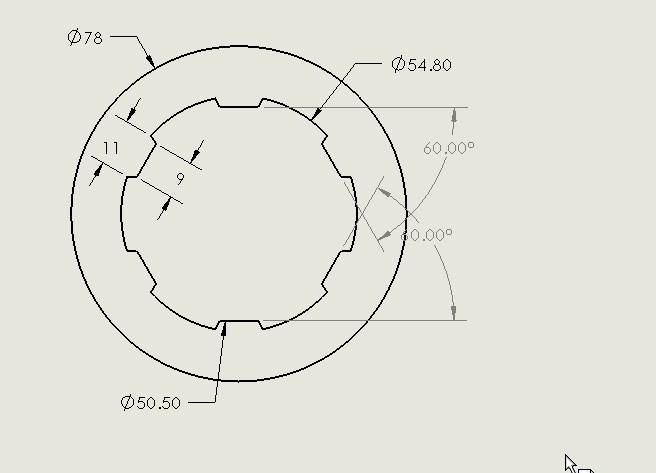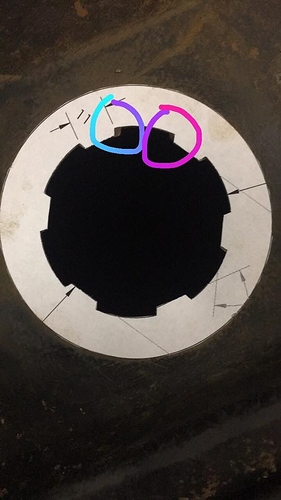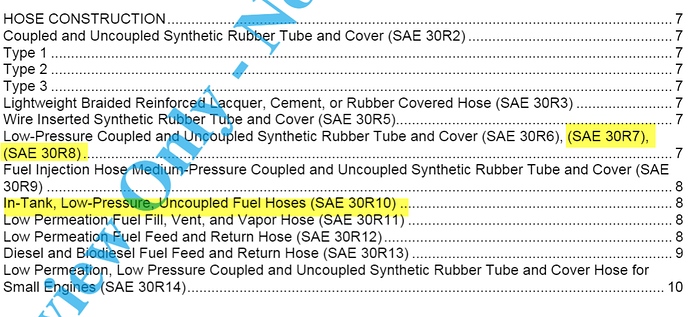i am in the process of fitting a low pressure transfer in tank fuel pump to solve fuel starvation. I read where others have trimmed a tab on the fuel tank drivers side to fit the BMW pump. Any advice as to which tab and how much to trim would be greatly appreciated. Pictures are of course really appreciated.
Dual fuel pump fitting
You will actually be much better served by using a second high pressure fuel pump and just T’ing the lines together. The factory pumps and 99% of aftermarket pumps (I use the 190LPH Walbro ones as they are only $35) have a built in check valve at the outlet of the pump to ensure the car starts easily - it holds pressure in the supply line while the car is off.
Either way, the ear you need to carefully file is on the left rear of the hole while looking at the tank in car-orientation.

@redneckvtek What’s the model of the 190 LPH Walbro pump you’re using, and where do you buy them for $35? Just googling, I came across several models, and all of them seem to sell for at least twice as much. TIA for the info!
Wal GSS250
I apologize, I was incorrect on pricing. Appears current pricing is around $50 through a wholesale distributor.
$59 from amazon
https://www.amazon.com/Walbro-GSS250-Fuel-Pump/dp/B000EDAJHC/ref=sr_1_1?keywords=gss250&qid=1574767565&sr=8-1
Thank you for your replies and the diagram, very much appreciated. I ended up discovering that the BMW low pressure transfer pump did fit right in with no trimming of the fuel tank. The orientation was not ideal, so I trimmed open the access hole to allow for the fuel hose and wiring to install easily. I then bought another passenger side access cover on ebay which I fitted with a 1/2" thick foam gasket I fashioned to give the whole assembly a sort of stock look. I’ll probably test the system some time this weekend. I wish I had known of your idea of T ing a pump as that would have saved a couple hundred $. Would not a Y fitting be prefered? Again, thanks.
Thanks!
My car was built on an '85 shell, so I’ve been using two pumps all along, both OE. I also have a custom surge tank where the low-pressure in-tank pump is essentially used to keep it full. This pump apparently failed pretty quickly but I didn’t know it as the car ran OK just with the external high-pressure pump. Then the HP pump starting working intermittently as well, although also new (I suspect because it’s hard-mounted to the chassis, instead of via rubber grommets.) So I’ve been looking for suitable Walbro alternatives for both, but they all seemed to flow way too much fuel for my fairly stock engine setup, especially compared to the factory low-pressure pump. I’ll try Walbro GSS250, it can’t be any worse than OE pumps which lasted under 1K miles.
BTW, does anyone know the flow rates for the factory pumps? Just curious… I couldn’t find this info anywhere.
Yes. The factory pumps flow around 150lph
There are vast differences in quality of factory pumps. You have to be careful where you source them from. Same with knockoff walbro’s. From what I see, most of the knockoffs are the “255’s”
Dont worry about running a bigger pump. The factory lines and regulators can easily handle a 255’s flow on a stock engine.
Some pumps cannot be run dry. The factory “early” LP pumps, at least the ones you can buy NOW, are OK to run dry. So are the Walbro 190’s.
I run two Walbro 190’s, or 1 Walbro 190 on the driver side w/ hydramat plus a stock pump on the pass side in the bowl. We can go 2 hours at full tilt.
Y fitting is fine too. The liquid doesnt care.
I use the early “eta” style fuel filter bracket (goes under the booster) and connect the two high pressure feed lines where the stock “i” filter is usually placed. A “t” was easy to source at home depot.
Make sure you use high quality fuel injection hose, and DIN clamps or injection clamps. Fuel fires suck.
You could also potentially Tee everything together INSIDE the tank, however install would be tricky and you would need a good bit of submersible injection hose, which is usually sold in 3’ sections and is pricy.
One final note, Watch the orientation of your pump when installing on the driver side. In some orientations and with some pumps, the wiring connections can contact the fuel baffle. You don’t want a short inside the tank. I bend the baffle down a bit as a matter of practice.
I would like to add:
J30R7 are the best price per length for low pressure (non-direct injection) fuel lines, basically what we have from the pump to the hardlines and the hardlines to the fuel rail.
You can get J30R8 which has a good bump in quality, but don’t even try J30R6s as every one I received actually lets vapors go through it’s “skin”
Now for the in tank. From the next picture, you can see that i’s J30R10.
Hope this helps.
I think I understand how your doing this. At first I was under the impression that you installed a T in the short piece of hose feed line attached to the passenger side pump. It seemed a T could put back pressure against the pump, but a Y fitting might not? Has anyone tried this way? Theoretically it sounds simpler.
There isn’t enough room to put it there and still have a way to install it on the hard line or the pump hanger.
From a pressure perspective the liquid will put pressure on the pump with either a T or a Y.
The pump has a one-way check valve built in to the outlet. This is so the lines hold pressure when the car is off to make it easier to start. As a side benefit, it lets you run a 2 pump system even if one pump is off (or fails).
I have been running this stuff outside of the tank.
https://www.amazon.com/gp/product/B0053OSB90/ref=ppx_yo_dt_b_search_asin_title?ie=UTF8&psc=1
SAE 30R14
It’s a good idea to add a low-pressure transfer pump to help with the fuel starvation issue. If you’re also working on the cooling or livewell setup, checking your water pressure pump at the same time can be useful to ensure steady flow through the system. When it comes to trimming the tab on the driver’s side of the tank for the BMW pump, make sure you only remove a small amount at a time so the pump can sit properly without forcing it in. It’s best to test-fit the pump after each small trim to see how it aligns. Try not to cut too much at once because that can weaken the mounting point. If anyone has pictures or has done this setup before, that would really help to see exactly where and how much to trim.




